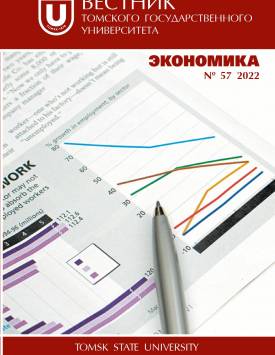Accounting for natural mining conditions as the basis for evaluating the effectiveness of the enterprise
The tax mechanism in the extractive industries should provide all enterprises with relatively equal terms of business, the differentiation of which is largely due to the influence of natural mineral mining conditions, to the number of the production conditions of mining mining factors of the Reno formation and the quality of minerals. However, the tools of the tax mechanism used, including the differentiation of tax rates for mining, are not able to ensure the necessary equality in mining enterprises’ profitability after taxation. Some economists offer a certain averaging of payments for deposits, which, in fact, is a refusal from the principles of rental taxation of mining enterprises. The differentiation of natural mineral mining conditions is expressed in the differential mining render of the deposit. The withdrawal of the differential mountain rent in the income of the state, the owner of the subsoil, can be ensured by further strengthening the differentiation of tax rates for mining, adding conditions for the development of specific deposits or the use of various forms of non-tax seizures of differential mining. In our opinion, the withdrawal of differential mining rents should be provided with a non-tax method. This is due to the fact that this rental income is fully owned by the state as the owner of the subsoil, for which the tax seizure is inefficient. Another part of the rental deposits of the field is a quasirent, a rent of machines or production capital. The quasirent, fully or partially, but at a rate reduced compared with the level of profit taxation, should be left at the disposal of the mining enterprise to stimulate an increase in the technological and innovative level of production. The last part of rental incomes is an absolute meager, which is formed from the excess of the existing demand for this natural resource. Taxation of absolute rent, as part of the entrepreneurial profit, should be made using the established taxation rates of profits on the general basis. Thus, the taxation of each part of the revenge income of the extractive enterprise should be carried out separately, in accordance with the specified principles, which will ensure the rental nature of the tax mechanism of mining enterprises and will strengthen its stimulating effect on improving the technological and innovative mining level. Contribution of the authors: the authors contributed equally to this article. The authors declare no conflicts of interests.
Keywords
natural resources, production capital, differential mining, quasirent, mechanism for extracting mountain rent, non-tax seizure, innovative technologiesAuthors
| Name | Organization | |
| Chernyavskiy Sergei V. | Central Economics and Mathematics Institute of the Russian Academy of Sciences | vchern2007@bk.ru |
| Palt Mikhail V. | Lomonosov Moscow Sate University | mvpalt@mail.ru |
| Chernyavskiy Vladimir S. | Central Economics and Mathematics Institute of the Russian Academy of Sciences | vchern2007@bk.ru |
| Astakhova Irina A. | Maykop State Technological University | irene-77@mail.ru |
References

Accounting for natural mining conditions as the basis for evaluating the effectiveness of the enterprise | Vestnik Tomskogo gosudarstvennogo universiteta. Ekonomika – Tomsk State University Journal of Economics. 2022. № 57. DOI: 10.17223/19988648/57/3
